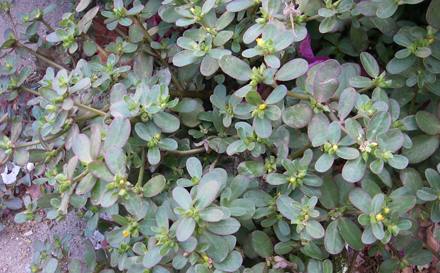“How do we better communicate the innovations and new partnerships influencing and advancing the urban agriculture story?” Answering this question was the focus of a Planet Forward salon, held April 4, which brought together dozens of sustainability leaders in the private, public and nonprofit sectors.
Moderated by Director of the School of Media and Public Affairs and Planet Forward founder Frank Sesno, this informal, interactive roundtable discussion concluded that collaboration, education and engagement are key to bringing about a more sustainable urban food system capable of helping to feed the 9 billion people projected be on the planet by 2050. Meanwhile, urbanization combined with the overall growth of the world's population could add another 2.5 billion people to urban populations by 2050, according to the United Nations, with close to 90 percent of the increase concentrated in poor regions of Asia and Africa.
Growing all the food in all the small places
While importing foods outside of seasonal growth has been common in the past, "we are increasingly importing during our own season, when farmers could be growing here," said Kathleen Merrigan, executive director of the GW Sustainability Collaborative and the former deputy secretary of the USDA.
Hear more from the Expert Voices at the Urban Agriculture Salon
Urban agriculture, or urban farming, is the practice of cultivating, processing and distributing food in or around a village, town or city — and while it has great potential to feed the planet in a more sustainable way, bringing about this shift may be more easily said than done.
One of the first steps to making urban agriculture viable is picking out certain varieties of crops that can produce readily and abundantly in particular climates, said Che Axum, director of the Center for Urban Agriculture and Gardening Education at the University of the District of Columbia, at the salon.
“We must produce more food in small spaces and produce more nutrient dense foods,” he said.
Amaranth, for example, can be grown in small spaces. Likewise, purslane, which also can be grown in small spaces and is high in omega-3 fatty acids, could be an important source of nutrients for people in urban areas.

Purslane is high in omega-3 fatty acids. (Photo by John Comeau/Creative Commons)
Carbon farming also is important — selecting crops such as rice capable of sequestering carbon, and using them for composting, among other things. However, additional data is needed to determine the best crops for for yield and nutritional density.
A focus on collaboration
Urban agriculture naturally is a collaborative endeavor, and it will take co-ops and partnering to help make it a reality, said Judy Ziewacz, president and CEO of the National Cooperative Business Association.
“People solve their own problems when they come together,” she said.
Co-ops can range from big names to small names, and even natural food co-ops are beginning to emerge. But with the rising popularity of natural food, big businesses are doubling down on the concept, which is putting stress on natural food co-ops. Many co-ops and institutions are addressing food deserts and bringing healthy food to underserved neighborhoods.
Funding remains a major concern for co-ops and other urban farming partnerships, but microfinance and crowdfunding is helping to create new funding streams. Federal, state and local governments also can be tapped to help fund fledgling urban agriculture partnerships.
Kathleen Merrigan, executive director of the GW Sustainability Collaborative and the former deputy secretary of the USDA, said she's seeing "an evolution of the politics of urban agriculture."
“We need to expect our municipal governments to make investments,” said Lauren Biel, executive director of DC Greens. “They can put wind in the sails of the amazing works that are happening on the ground.”
Engaging students on urban ag
A commonly missed opportunity for groups trying to promote urban agriculture is failing to educate and engage local universities and the students who inhabit them. Student involvement in research, processing and packaging can all be a major boon, Axum said.
“Getting them while they’re young” also is an effective strategy for promoting urban farming education, according to Sam Ullery, a school garden specialist at the Office of the State Superintendent of Education's School Garden Program in D.C.
In Washington, D.C., alone, there are more than 100 gardens in public schools, but only 15 percent actually are making use of them. Educating teachers on the importance of urban farming is the first step.
“There is evidence that students with behavioral problems are calmed by working in gardens,” Ullery said. This might help teachers see the value in teaching urban farming, and overcoming their lack of comfort with taking their class outdoors.
Urban ag is no silver bullet
While urban farming may help us to alleviate social and environmental pressures by allowing us to produce more food where we already live, it may not be enough to meet all of the world’s future food demands.
“We need to be really careful that we don’t expect every form of urban agriculture to feed our cities,” DC Greens’ Biel said.
